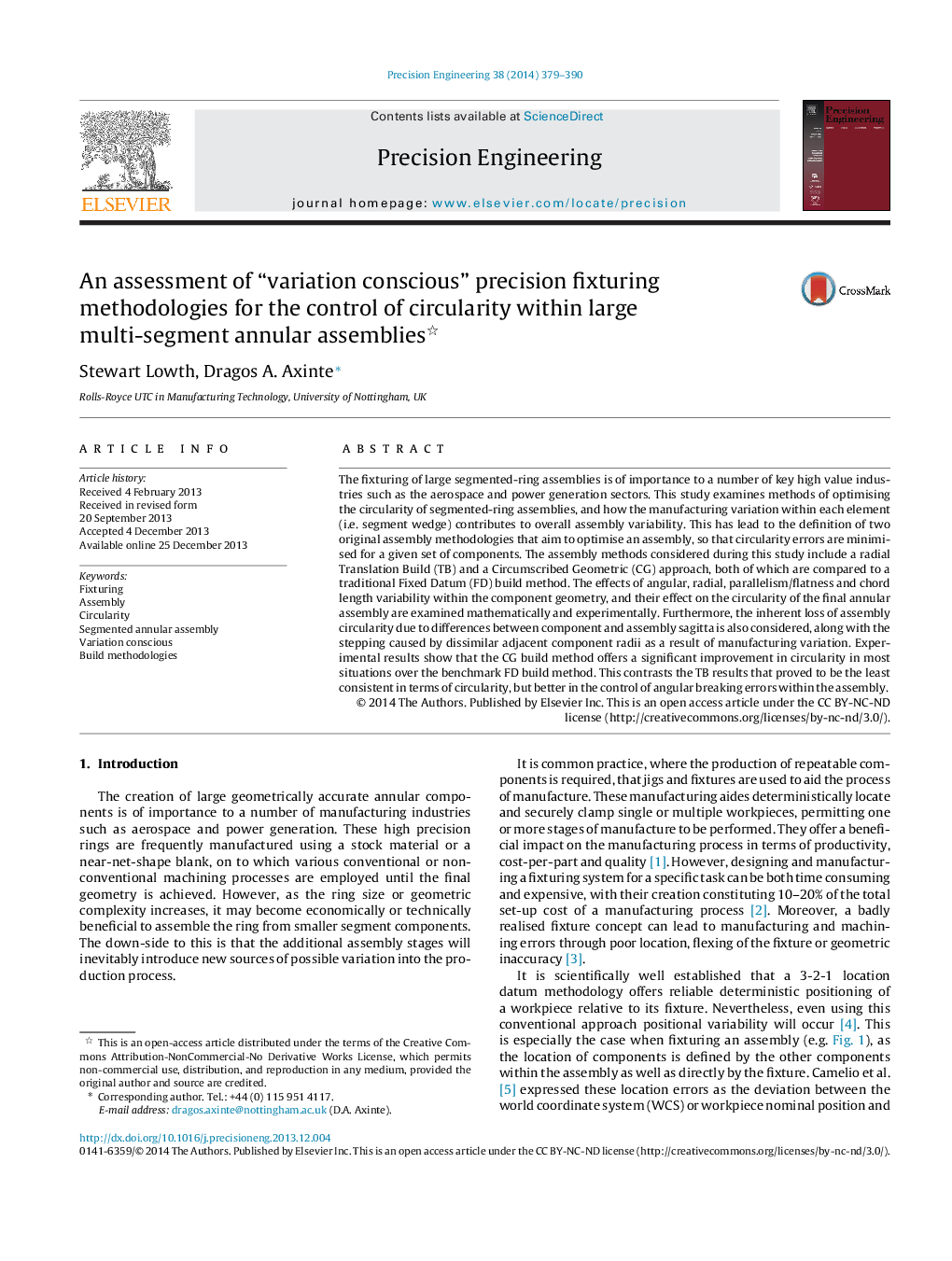| کد مقاله | کد نشریه | سال انتشار | مقاله انگلیسی | نسخه تمام متن |
|---|---|---|---|---|
| 10420327 | 904801 | 2014 | 12 صفحه PDF | دانلود رایگان |
عنوان انگلیسی مقاله ISI
An assessment of “variation conscious” precision fixturing methodologies for the control of circularity within large multi-segment annular assemblies
ترجمه فارسی عنوان
ارزیابی تغییرات آگاهانه روشهای کنترل دقیق برای کنترل دایره ای در مجامع بزرگ چند قطعه ای حلقه ای
دانلود مقاله + سفارش ترجمه
دانلود مقاله ISI انگلیسی
رایگان برای ایرانیان
موضوعات مرتبط
مهندسی و علوم پایه
سایر رشته های مهندسی
مهندسی صنعتی و تولید
چکیده انگلیسی
The fixturing of large segmented-ring assemblies is of importance to a number of key high value industries such as the aerospace and power generation sectors. This study examines methods of optimising the circularity of segmented-ring assemblies, and how the manufacturing variation within each element (i.e. segment wedge) contributes to overall assembly variability. This has lead to the definition of two original assembly methodologies that aim to optimise an assembly, so that circularity errors are minimised for a given set of components. The assembly methods considered during this study include a radial Translation Build (TB) and a Circumscribed Geometric (CG) approach, both of which are compared to a traditional Fixed Datum (FD) build method. The effects of angular, radial, parallelism/flatness and chord length variability within the component geometry, and their effect on the circularity of the final annular assembly are examined mathematically and experimentally. Furthermore, the inherent loss of assembly circularity due to differences between component and assembly sagitta is also considered, along with the stepping caused by dissimilar adjacent component radii as a result of manufacturing variation. Experimental results show that the CG build method offers a significant improvement in circularity in most situations over the benchmark FD build method. This contrasts the TB results that proved to be the least consistent in terms of circularity, but better in the control of angular breaking errors within the assembly.
ناشر
Database: Elsevier - ScienceDirect (ساینس دایرکت)
Journal: Precision Engineering - Volume 38, Issue 2, April 2014, Pages 379-390
Journal: Precision Engineering - Volume 38, Issue 2, April 2014, Pages 379-390
نویسندگان
Stewart Lowth, Dragos A. Axinte,
